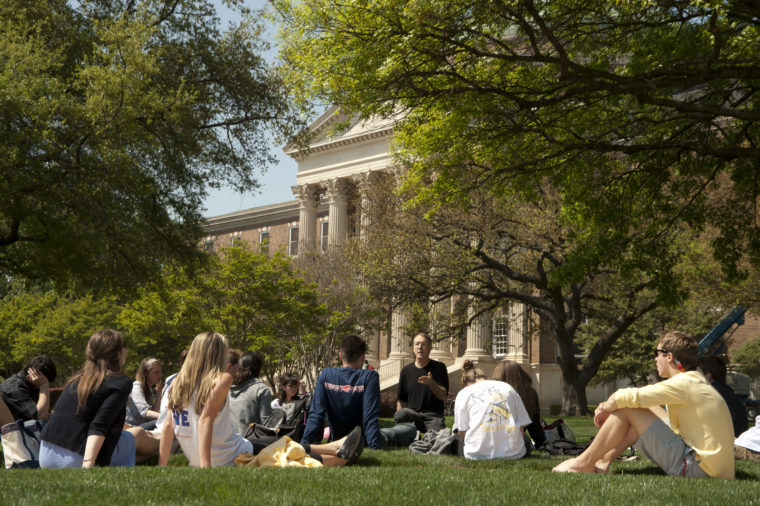College teaching can be one of the most enjoyable and challenging aspects of faculty work. Unfortunately, very few of us receive much in the way of training on how to be an effective teacher. As part of my role leading the teaching center at my current institution, we host a Teaching Effectiveness Symposium at the beginning of the academic year to help provide professional development for faculty. For this year’s symposium, we hosted two teaching experts, Ken Bain and James Lang, to share their expertise with us. In today’s post, I want to share five key takeaways from their presentations on how to foster deep learning in college teaching.

Photo credit: starmanseries
1. Students take a deep approach to learning when trying to answer questions.
If you think about when you seek out information, I suspect it is when you are trying to answer a question of some kind. When I need to know to fix something around the house, I go to YouTube and watch videos. And typically not just one, I’ll watch several to get perspectives on how to make a repair. I’m curious and seek out answers because I have an important question that I need to answer.
As instructors, we want our students to go beyond surface level understanding of course content. Surface learners focus on cramming and grades more than a deep understanding and comprehension of course content. Unfortunately, this happens too infrequently. Yet, the research on college teaching clearly demonstrates that students take a deeper approach to learning when they are seeking answers to questions.
2. Frame class with questions that encourage student curiosity.
Given the fact that people seek out information when they are trying answer questions, you should frame your class with questions that your students will seek to answer throughout the semester. Significantly, students may have questions they want to bring to class, but a primary function of an instructor is bringing questions to the table. In fact, a great thing to do on the first day of class is to introduce questions that will frame your class.
These questions can be a powerful mechanism that can help students think about your course content and apply content to their own experiences.
3. Provide opportunities for students to try, fail, and receive feedback.
Faculty should provide opportunities both in and outside of class for students to try, fail, and receive feedback. As the saying goes, experience is the best teacher. In terms of teaching, this means that we need to look for ways that students can (in often low stakes ways) try and fail. Yet, try and fail is not enough. Feedback from instructors helps students learn from their failure and make improvements for their next attempt. When designing your class, identify what items students need to work on and then design activities that allow students to try, fail, and receive feedback.
4. Provide opportunities students to recall information.
The research literature on human memory suggests the need to identify opportunities for students to recall information. There are some relatively simple steps that you can take as an instructor to do this. For example, make all tests and exams cumulative that force students to recall material from earlier in the course. At the beginning of a class session, ask students what they remember from previous classes as a way to encourage memory. At the end of class, ask students to tell you or write down the key takeaways from class that day. If you lecture, you can similarly pause your lecture and ask students to make note of the key concepts and points from the lecture.
5. Make time for what you expect students to know/do.
A mistake that faculty often make is expecting students to know something without teaching them how to do it. For instance, we ask students to make presentations without teaching them how to do it. We ask them to write literature reviews without ever teaching them how to do this. Many faculty fear taking time away from content to do these kinds of things. But, really, how do we expect students to learn something if we don’t teach them?
Personally, it took me years to get to the place where I was willing to let go of a little bit of content in order to help students develop some of the more soft skills that we find vital for their education. Once doing so, I’ve found it enormously beneficial. I believe my students need to learn academic writing and providing feedback alone wasn’t enough. I needed to develop opportunities for them to try, fail, and get my feedback. And I needed to make time for this in class. We all love our content, but this is a small sacrifice worth making to foster deep learning in college teaching.






